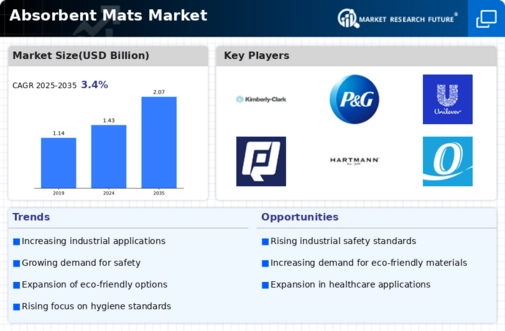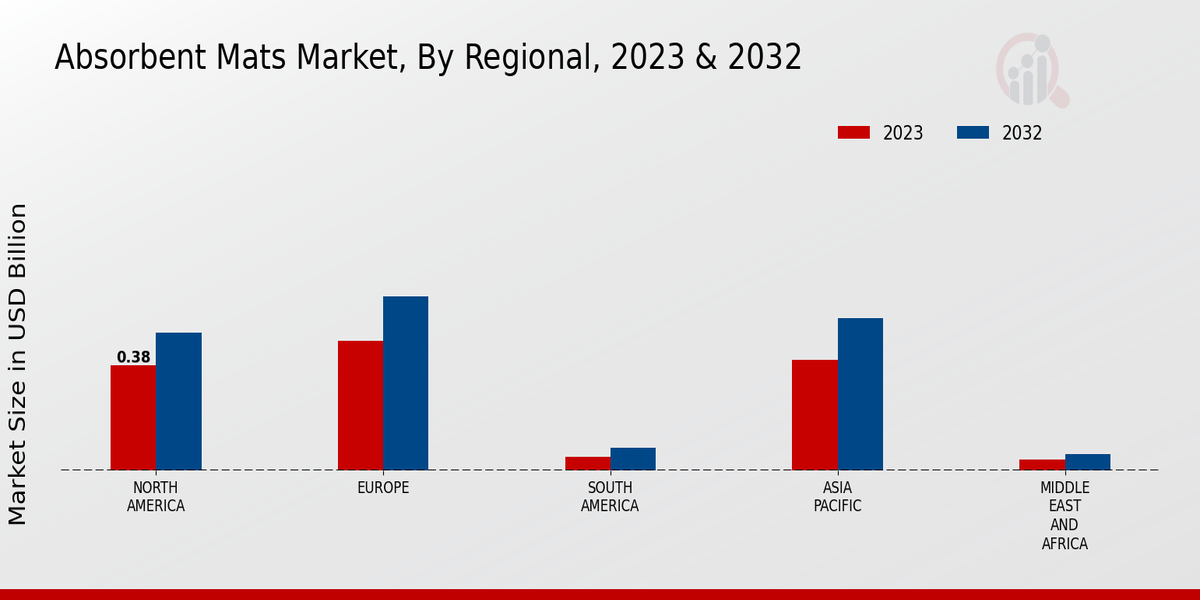Market Growth Projections
The Global Absorbent Mats Market Industry is poised for substantial growth, with projections indicating a rise from 1.43 USD Billion in 2024 to 2.07 USD Billion by 2035. This growth trajectory reflects a compound annual growth rate (CAGR) of 3.41% from 2025 to 2035. The increasing demand for absorbent mats across various sectors, including automotive, oil and gas, and manufacturing, underscores the market's potential. As industries continue to prioritize safety, compliance, and sustainability, the absorbent mats market is likely to expand, presenting opportunities for manufacturers and suppliers in this evolving landscape.
Expansion of Oil and Gas Industry
The oil and gas sector is a pivotal driver for the Global Absorbent Mats Market Industry, as it frequently encounters spills and leaks that necessitate immediate containment solutions. Absorbent mats are essential tools for managing hazardous materials and ensuring compliance with environmental regulations. With the ongoing expansion of exploration and production activities, the demand for absorbent mats is likely to increase significantly. This sector's growth is anticipated to contribute to the market's overall expansion, reinforcing the need for effective spill management solutions in high-risk environments.
Growing Demand from Automotive Sector
The automotive industry is a significant contributor to the Global Absorbent Mats Market Industry, as manufacturers increasingly utilize absorbent mats for various applications. These mats are essential for managing spills of oils, fuels, and other fluids during vehicle maintenance and manufacturing processes. The demand from this sector is expected to propel the market, with projections indicating a growth to 2.07 USD Billion by 2035. As automotive companies prioritize efficiency and safety, the adoption of absorbent mats is likely to rise, reflecting a broader trend towards sustainable practices and waste management in the automotive supply chain.
Increasing Industrial Safety Regulations
The Global Absorbent Mats Market Industry is experiencing growth due to the rising emphasis on workplace safety regulations across various sectors. Governments worldwide are implementing stringent safety standards to mitigate risks associated with spills and leaks. For instance, industries such as manufacturing and chemicals are mandated to use absorbent materials to ensure compliance with safety protocols. This regulatory landscape is projected to drive the market value to approximately 1.43 USD Billion in 2024, as companies invest in absorbent mats to avoid penalties and enhance safety measures. The focus on employee safety and environmental protection is likely to sustain this trend in the coming years.
Technological Advancements in Material Science
Innovations in material science are shaping the Global Absorbent Mats Market Industry, leading to the development of more efficient and effective absorbent products. Advances in polymer technology and the introduction of new materials enhance the absorbency and durability of mats, catering to diverse industrial needs. These technological improvements not only improve performance but also reduce costs associated with spill management. As industries seek to optimize their operations, the adoption of advanced absorbent mats is likely to increase, further driving market growth and expanding the range of applications for these products.
Rising Awareness of Environmental Sustainability
Environmental sustainability is becoming a critical focus for industries worldwide, influencing the Global Absorbent Mats Market Industry. Companies are increasingly aware of their ecological footprint and are seeking eco-friendly absorbent solutions. This shift is driving demand for mats made from recycled materials or biodegradable options, aligning with corporate social responsibility initiatives. As organizations strive to meet sustainability goals, the market is expected to grow at a CAGR of 3.41% from 2025 to 2035. This trend not only enhances brand reputation but also addresses regulatory pressures regarding waste management and environmental impact.























Leave a Comment